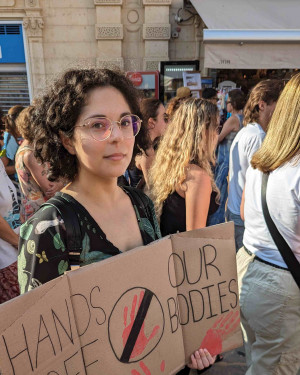Euthanasia
We firmly believe in the right to bodily autonomy and the right to die with dignity. We want to ensure that no one can influence the decision of any other person and there are clear conditionalities on this sensitive subject. To avoid any confusion we first present a number of definitions
Definitions
Passive Euthanasia: Passive euthanasia occurs when the person dies because the medical professionals either don't do something necessary to keep the person alive, or when they stop doing something that is keeping the person alive, such as switch off life-support machines, disconnect a feeding tube, don't carry out a life-extending operation, or don't give life-extending drugs.
Assisted Dying: A person makes the request out of their free will, not coerced or pressured by other persons, and with full conviction, to take their life, and seeks professional (typically doctor’s) assistance. Before undertaking Assisted Dying, the person should first be given the opportunity to explore other life and death options available. To the very end, the person stays in full control of the process and is solely responsible for their death. The physician's role is to supply, but not to administer, the lethal drug
Active Euthanasia: Occurs, when a doctor, or another person, intentionally administers a fatal dose of medication to cause the patient's death at the patient's request and with full, informed consent. The main difference to assisted dying is, that active euthanasia is entirely physician-mediated, including administration of the lethal dose, whereas persons committing assisted dying to administer the lethal dose to themselves.
We further define an additional type of euthanasia :
Indirect Euthanasia occurs when the medication that is administered to alleviate pain for the patient, also results in the patient’s lifespan being shortened, such as palliative sedation. This is done with the intention of relieving one’s suffering, rather than hastening one’s death.
Furthermore, we divide each of the above definitions in the following manner:
Voluntary: Where a person's life is ended at their request to relieve them of suffering
Involuntary: Performed on a person who would be able to provide informed consent, but does not.
The Policy
Legalise Living Wills.
A written statement detailing a person's desires regarding future medical treatment in circumstances in which they are no longer able to express informed consent
Legalise Voluntary Passive Euthanasia;
when someone explicitly requests that further life-sustaining/ life-extending treatment be withheld from them, allowing them to pass.
when someone gives their consent in advance through a living will, and requests passive euthanasia in the event they ever find themselves in a particular situation which they now regard as unbearable and offering no prospect of improvement and in which the person is incapacitated to make a decision themselves.
Legalise Voluntary Indirect Euthanasia;
when medication is administered to alleviate pain for the patient, also results in the patient’s lifespan being shortened, such as palliative sedation. This is done with the intention of relieving one’s suffering, rather than hastening one’s death.
Legalise Voluntary Assisted Dying;
For competent adults who suffer from "constant and unbearable physical suffering that cannot be alleviated". Ensure that the following criteria are met before allowing assisted dying:
The person is a competent adult who suffers from "constant and unbearable physical suffering that cannot be alleviated”.
The person undergoes an ex-ante evaluation with at least two independent doctors and one psychiatrist, that need to confirm the person is a competent adult who suffers from "constant and unbearable physical suffering that cannot be alleviated," and that the person is making the request out of their own free will, not coerced or pressured by other persons.
The person’s request must be made earnestly and with full conviction, as determined during the ex-ante evaluation.
Ensure that during the procedure;
the person stays in full control of the process. Indeed, the physician’s role is to supply, but not to administer, the lethal drug.
family and friends are allowed to be present if the patient chooses so.
Put in place an ex-post committee to review all cases of assisted dying, composed of at least a medical expert, an ethicist and a legal expert. Every instance of assisted dying must be reported.
Ensure that no doctor is forced to take part in such a procedure.
Ensure any form of involuntary and active Euthanasia is illegal.



